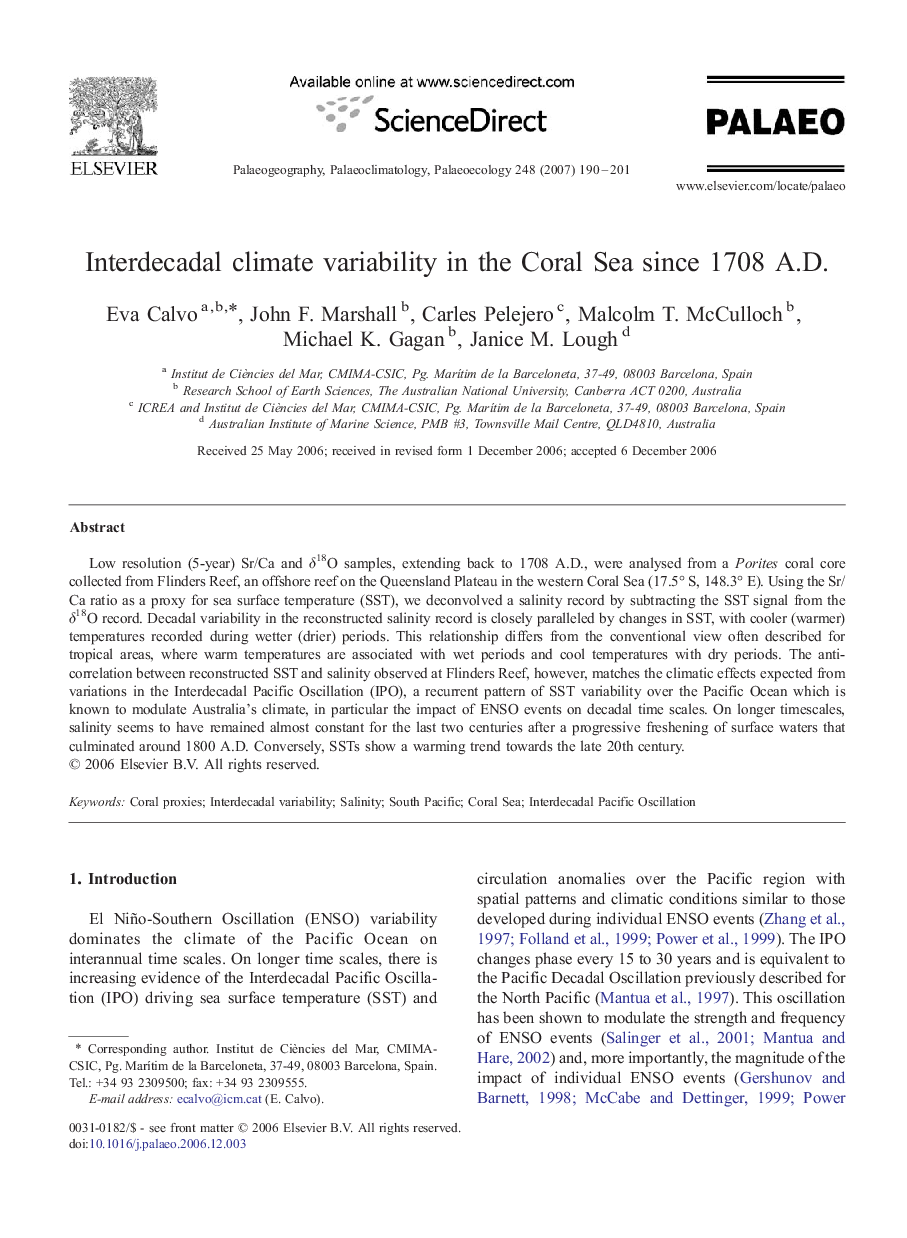| Article ID | Journal | Published Year | Pages | File Type |
|---|---|---|---|---|
| 4469082 | Palaeogeography, Palaeoclimatology, Palaeoecology | 2007 | 12 Pages |
Low resolution (5-year) Sr/Ca and δ18O samples, extending back to 1708 A.D., were analysed from a Porites coral core collected from Flinders Reef, an offshore reef on the Queensland Plateau in the western Coral Sea (17.5° S, 148.3° E). Using the Sr/Ca ratio as a proxy for sea surface temperature (SST), we deconvolved a salinity record by subtracting the SST signal from the δ18O record. Decadal variability in the reconstructed salinity record is closely paralleled by changes in SST, with cooler (warmer) temperatures recorded during wetter (drier) periods. This relationship differs from the conventional view often described for tropical areas, where warm temperatures are associated with wet periods and cool temperatures with dry periods. The anti-correlation between reconstructed SST and salinity observed at Flinders Reef, however, matches the climatic effects expected from variations in the Interdecadal Pacific Oscillation (IPO), a recurrent pattern of SST variability over the Pacific Ocean which is known to modulate Australia's climate, in particular the impact of ENSO events on decadal time scales. On longer timescales, salinity seems to have remained almost constant for the last two centuries after a progressive freshening of surface waters that culminated around 1800 A.D. Conversely, SSTs show a warming trend towards the late 20th century.
